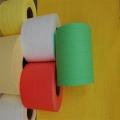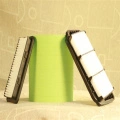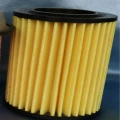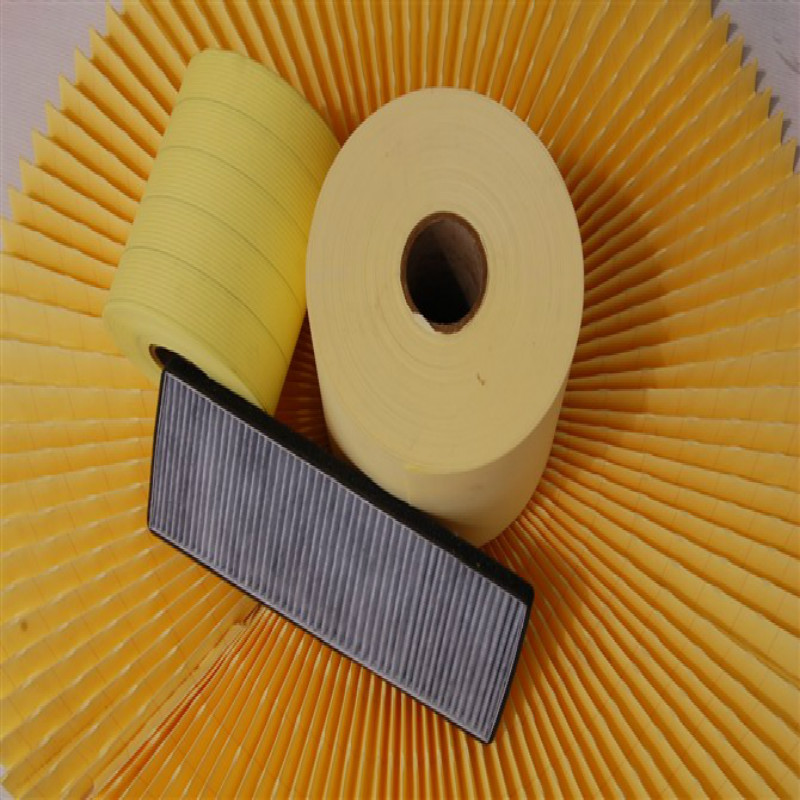Welcome to the most comprehensive resource on automotive air filter paper. As the core component of any car air filter, the quality of the filter media directly dictates engine performance, fuel efficiency, and longevity. In this in-depth guide, we will explore everything from industry trends and critical technical specifications to manufacturing processes and real-world applications. Whether you are an automotive engineer, a filter manufacturer, or a procurement specialist, this page will provide the expert insights you need to make informed decisions.
The global automotive industry is in a constant state of evolution. Stricter emissions standards like EURO 7, the rise of high-output turbocharged engines, and the increasing consumer demand for durability have placed unprecedented demands on all vehicle components. The humble air filter, and specifically its core medium—the car air filter paper—is at the forefront of this technological push. A modern engine requires an incredibly precise air-to-fuel ratio, and the filter's ability to supply clean, unrestricted airflow is paramount. This makes the selection of high-quality auto filter paper not just a matter of maintenance, but a critical factor in vehicle performance engineering.
The market for automotive air filter paper is being shaped by several key global trends. Understanding these trends is crucial for staying ahead in a competitive landscape.

High-grade rolls of automotive air filter paper awaiting processing and pleating.
The performance of automotive air filter paper is not a matter of opinion; it is defined by a set of precise technical parameters measured according to international standards like ISO 5011. Understanding these metrics is essential for specifying the right material for an application.
| Technical Parameter | Unit | Typical Range (High-Performance) | Importance & Impact |
|---|---|---|---|
| Basis Weight | g/m² | 100 - 180 | Indicates the mass of the paper per unit area. Higher basis weight often correlates with greater strength and dust holding capacity. |
| Thickness | mm | 0.4 - 0.8 | Affects the filter's structural integrity and pleatability. It is a key factor in determining Dust Holding Capacity (DHC). |
| Air Permeability | L/m²·s @ 200Pa | 1500 - 3500 | Measures how easily air flows through the paper. Higher permeability means lower resistance, better engine performance, and improved fuel economy. |
| Filtration Efficiency (Initial) | % | 99.5 - 99.9+ | The percentage of airborne particles captured by the paper. Higher efficiency provides better protection against engine wear. |
| Maximum Pore Size | µm | 50 - 90 | Defines the size of the largest particle that can pass through the filter. A smaller pore size generally means higher efficiency. |
| Dust Holding Capacity (DHC) | g/m² | 400 - 700+ | The amount of dust the filter can hold before reaching a specified terminal pressure drop. Higher DHC means a longer filter service life. |
| Stiffness (MD/CD) | mN | >250 / >120 | Measures the paper's resistance to bending in both the machine direction (MD) and cross direction (CD). Critical for maintaining pleat shape under high airflow. |
| Water Repellency | (Cobb Test) g/m² | < 25 | Indicates resistance to moisture absorption, which prevents the filter from becoming clogged in humid conditions and maintains structural integrity. |
Numbers and tables are essential, but visual data can provide a more intuitive understanding of product performance. Here's how our premium Air Filter Paper stacks up.
Producing world-class automotive air filter paper is a multi-stage process that combines natural materials science with precision engineering. Each step is meticulously controlled to ensure the final product meets and exceeds the stringent requirements of the automotive industry. Our ISO 9001 certified process guarantees consistency and quality in every roll.

The precise pleating of car air filter paper is crucial for maximizing surface area and airflow.
A precise blend of high-alpha cellulose wood pulp and specialized synthetic fibers (e.g., polyester, polypropylene) is created to achieve the target strength and filtration characteristics.
Using a Fourdrinier or similar paper machine, the fiber slurry is formed into a continuous sheet with uniform thickness and basis weight.
The paper is saturated with a phenolic or acrylic resin solution. This crucial step imparts stiffness, strength, and resistance to water and chemicals.
The resin-impregnated paper passes through long curing ovens where high temperatures cross-link the resin, permanently setting the paper's properties.
The cured paper is corrugated to create stable pleats. This process dramatically increases the filter's surface area, boosting its DHC and lifespan.
Samples from each batch are rigorously tested in our lab according to ISO 5011 for efficiency, permeability, DHC, and other key metrics.
The final, tested paper is slit to customer-specified widths and wound into large rolls, ready for shipment and filter assembly.
Choosing our premium auto filter paper provides a multitude of technical advantages that translate into tangible benefits for both filter manufacturers and end-users.
With filtration efficiency up to 99.9%+, our paper captures even the smallest abrasive particles (soot, dust, sand) that cause premature wear on pistons, rings, and cylinder walls. This directly contributes to longer engine life and reduced warranty claims.
Our media is engineered for exceptionally high air permeability. This low-resistance design ensures the engine receives the optimal amount of air with minimal effort, reducing pumping losses and improving fuel economy by up to 1.5-2% in some applications.
Thanks to a unique fiber structure and high-loft design, our paper boasts a Dust Holding Capacity (DHC) up to 30% higher than conventional papers. This means filters can go longer between replacements, reducing total cost of ownership.
Advanced resin chemistry and high stiffness ratings ensure that our pleats remain stable and do not collapse even under extreme airflow conditions found in high-performance or turbocharged engines. This prevents "dust dumping" and maintains consistent filtration.
The fully cured resin provides a robust barrier against moisture and airborne chemicals, preventing the filter from becoming soft or clogged in humid environments or from exposure to oil vapors from the PCV system.
Our stringent process controls and adherence to ISO 9001 standards mean that every roll of our automotive air filter paper performs identically, ensuring your finished filters deliver reliable and predictable performance every time.

When selecting a supplier for a critical component like car air filter paper, it's important to look beyond the product itself. Here's a comparison of what we offer versus typical market competitors.
| Feature | Our Company | Generic Competitor A | Low-Cost Supplier B |
|---|---|---|---|
| Material Sourcing | Premium blend of certified cellulose and high-purity synthetic fibers | Standard cellulose pulp | Recycled or unverified fiber sources |
| ISO Certifications | ISO 9001 (Quality), ISO 14001 (Environmental) | ISO 9001 Claimed | No Certifications |
| Performance Testing | In-house lab with ISO 5011 compliant testing for every batch | Batch testing upon request | Basic weight/thickness check only |
| R&D Investment | Dedicated R&D team for new media, including nanofiber development | Limited, focuses on cost reduction | None |
| Customization Options | Fully customizable: basis weight, resin, color, dimensions, treatments | Limited standard options | "As-is" products only |
| Technical Support | Dedicated material engineers to assist with application design | Sales support only | Email support with slow response |
| Supply Chain Stability | Long-term contracts with raw material suppliers; global logistics network | Vulnerable to market fluctuations | Inconsistent supply and lead times |
One size does not fit all in the automotive world. We recognize that different applications—from a subcompact city car to a heavy-duty mining truck—require different filtration characteristics. Our experience lies in collaborating with clients to develop bespoke auto filter paper solutions.

We offer auto filter paper in various colors and specifications to meet branding and technical requirements.
Our engineering team is ready to partner with you. Contact us with your specifications, and we will develop a sample of custom automotive air filter paper for your evaluation and testing.
Our expertise is demonstrated by the success our clients achieve. Here are two examples of how our high-performance automotive air filter paper has solved real-world challenges.
Client: A national logistics company with a fleet of over 500 Class 8 trucks.
Challenge: Engines operating in dusty rural and construction environments were experiencing frequent "dusted" failures, leading to costly downtime and engine rebuilds. Standard filter service intervals of 15,000 miles were proving inadequate.
Solution: We provided a custom-developed auto filter paper with a 20% higher basis weight and a dual-layer media structure for enhanced DHC. The paper was treated with a high-tack resin to improve particle capture.
Result: The new filters, made with our paper, safely extended the service interval to 25,000 miles. Engine-related downtime due to dust ingestion was eliminated, saving the company an estimated $1.2 million in the first year of implementation. The client's maintenance director stated, "Switching to filters made with this advanced media has been a game-changer for our fleet's reliability and bottom line."
Client: A leading manufacturer of aftermarket cold air intake systems for sports cars.
Challenge: Their customers demanded maximum airflow for increased horsepower but were unwilling to compromise on engine protection. Existing "high-flow" cotton gauze filters showed poor filtration efficiency in independent tests.
Solution: We supplied a lightweight synthetic car air filter paper with exceptionally high air permeability (over 3500 L/m²·s) but with a graded-density structure that maintained 99.5% filtration efficiency.
Result: The client was able to market a "High-Flow, High-Efficiency" filter that provided a dyno-proven 7hp gain over stock filters while offering superior protection to oiled cotton filters. Their product gained a reputation for performance without compromise, increasing their market share by 15%.

In today's digital world, trust is paramount. We are committed to demonstrating our leadership in the filtration industry by adhering to the principles of Google's E-E-A-T guidelines.

Our commitment to quality is verified through rigorous inspection and lab testing.
With over 20 years in the filtration media industry, our team comprises chemical engineers, material scientists, and automotive specialists. We don't just sell paper; we provide engineered solutions. Our deep understanding of fluid dynamics, polymer chemistry, and engine mechanics allows us to create products that solve complex challenges. We have successfully supplied materials for millions of filters used in vehicles across the globe, from passenger cars to heavy industrial machinery.
Cellulose-based paper is the traditional standard, made from wood pulp. It offers good filtration at a cost-effective price. Synthetic paper, made from fibers like polyester or polypropylene, offers significant advantages: it's naturally water-resistant (hydrophobic), has higher strength, and can be engineered for lower airflow resistance and higher DHC. Often, the best performance comes from a composite media that blends both cellulose and synthetic fibers to leverage the benefits of each.
Basis weight is a primary indicator of a filter paper's substance. Generally, a higher basis weight means more fibers are present in a given area. This can lead to increased strength, higher Dust Holding Capacity (DHC), and potentially higher filtration efficiency. However, it can also increase airflow resistance. The key is to find the optimal basis weight for a specific application, balancing DHC and efficiency with the need for low pressure drop.
Air permeability measures how easily air can pass through the filter media. It's usually expressed in liters per square meter per second (L/m²·s) at a specific pressure difference (e.g., 200 Pa). For an engine, high permeability is crucial because it reduces the energy the engine must expend to draw in air. This is known as reducing "pumping losses." Lower resistance translates directly to better throttle response, more available horsepower, and improved fuel economy.
While filter paper itself is not directly regulated by emissions standards, its performance is critical to enabling engines to meet them. By providing extremely clean air, our high-efficiency media protects sensitive sensors (like MAF sensors) and combustion chambers from contamination, ensuring the engine's control unit can maintain the precise air-fuel ratio needed for clean combustion and efficient after-treatment system operation. Our low-resistance paper also helps engines operate more efficiently, reducing overall CO2 emissions.
The lifespan of an air filter depends heavily on operating conditions (e.g., dusty vs. clean environment). However, thanks to the high Dust Holding Capacity (DHC) of our auto filter paper, filters made from it typically meet or exceed OEM-recommended service intervals, which are often 12,000 to 30,000 miles (20,000 to 50,000 km). For heavy-duty applications, our custom media can be engineered for even longer life, as demonstrated in our case studies.
Yes. This is a key part of our customization service. For applications where fire safety is a concern, such as in high-performance vehicles or certain industrial engines, we can use specific resin systems and additives to make the automotive air filter paper flame-retardant, meeting standards like UL 94 V-0.
The best way is to visit our product page for Air Filter Paper and use the contact form or email address provided. Please specify your application and the technical parameters you're interested in. Our engineering team will review your request and get in touch to discuss your requirements, provide a TDS, and arrange for samples for your evaluation.
To deepen your understanding of filtration science and automotive engineering, we recommend consulting these authoritative sources. Our work is informed by and contributes to the body of knowledge found in these and similar publications.
Thickness:0.2-6 mm or Customized
Strand Thickness:0.5-8mm
Swd:2.5-100mm Lwd: 4.5-200mm
Surface Treatment:Powder Coated,Galvanized
MATERAL: PHENOLIC PAPER
MELT-BLOWN PBT
NON-WONEN LAMINATES
DIESEL FUEL FINE FILTERATION GRADE
APPLICATION : FUEL OIL WATER SEPERATION FILTER MEDIA
Material: Electrostatic cotton with activated carbon
PET/PP with Activated Carbon
Basic weight: 200-800g/m2
Application: Cabin Air Filters Panel Air Filters, Filter Cartridge, etc.
RAW MATERIAL: Polypropylene
PROCESS TECHNOLOGY: Melt-blown non-woven
RANGE OF EFFICIENCY: M5 ~ H11
Jul,2025,31
Jul,2025,31
Jul,2025,31
Jul,2025,31
Email to this supplier

